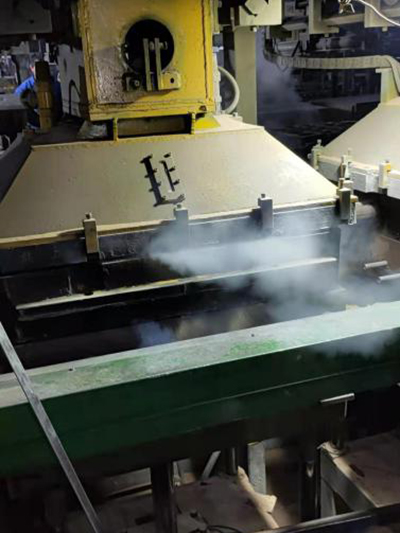Is Sand Casting Sustainable? An Examination of Environmental Impact and Future Practices
Sand casting, one of the oldest metal casting processes, continues to play a significant role in modern manufacturing. This technique involves creating a mold from sand and then pouring molten metal into the mold to form intricate shapes. Given the increasing emphasis on sustainability in industrial processes, it is essential to examine whether sand casting can be considered a sustainable manufacturing method.
Environmental Impact of Sand Casting
At first glance, sand casting appears to have a relatively low environmental impact compared to other manufacturing processes. Sand is abundantly available, and the materials used in the process, such as metals and sand itself, can often be recycled. The recycling of sand, in particular, reduces the need for new raw materials, thus minimizing the ecological footprint. However, the sustainability of sand casting is determined not only by material consumption but also by energy use and waste generation.
One of the significant concerns with sand casting is the energy required to melt metals. Depending on the type of metal, the melting process can consume substantial amounts of energy, primarily sourced from fossil fuels. This energy consumption can contribute to greenhouse gas emissions, thereby negatively impacting the environment. However, advancements in technology, such as the use of electric induction furnaces, are helping to reduce energy consumption and lower emissions associated with sand casting.
Waste Management
Another critical aspect of the sustainability of sand casting is the management of waste. During the casting process, a considerable amount of sand is often required, especially for mass production. Traditional sand casting methods generate waste sand that, if not managed properly, could contribute to environmental degradation. Fortunately, many foundries have implemented recycling processes for this sand, allowing it to be reused in subsequent casts. This practice not only reduces waste but also diminishes the demand for new sand, showcasing a commitment to more sustainable practices.
is sand casting sustainable

In addition to sand waste, there are other byproducts, including metal scrap and foundry sand, which can harm the environment if not managed effectively. Proper recycling and repurposing of these materials are vital to minimizing environmental impact, with many companies adopting circular economy principles to ensure that waste is reduced and resources are reused.
Sustainability Practices in Sand Casting
The path to sustainability in sand casting also involves adopting best practices and innovative technologies. Foundries have begun utilizing eco-friendly materials, such as inorganic binders, to minimize the use of harmful chemicals commonly associated with traditional sand casting processes. These binders enhance the mold’s strength while ensuring that the impact on human health and the environment is reduced.
Furthermore, implementing energy-efficient technologies and optimizing process parameters can lead to significant improvements in the sustainability of sand casting. For instance, using computer simulations and artificial intelligence can help foundries design molds and optimize the melting process, reducing energy requirements and waste generation.
Future Outlook
As the manufacturing industry increasingly prioritizes sustainability, the future of sand casting will likely be shaped by the ongoing development of new materials and practices. Research into bio-based sand alternatives and more energy-efficient melting techniques holds great promise for reducing the environmental impact of this traditional process.
In conclusion, sand casting has the potential to be a sustainable manufacturing method, especially when integrated with modern practices and technologies that minimize resource consumption and waste generation. By focusing on recycling, energy efficiency, and environmentally friendly materials, the sand casting industry can contribute to a more sustainable future. As the demand for sustainable practices continues to rise, it will be crucial for foundries to embrace innovation and commit themselves to constant improvement in their processes.
Post time:10월 . 12, 2024 02:59
Next:Applications and Benefits of Lost Foam Casting in Modern Manufacturing Processes
